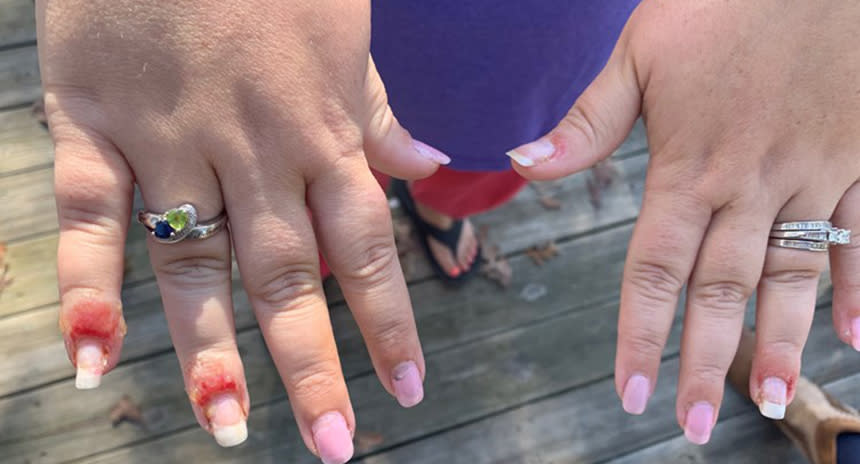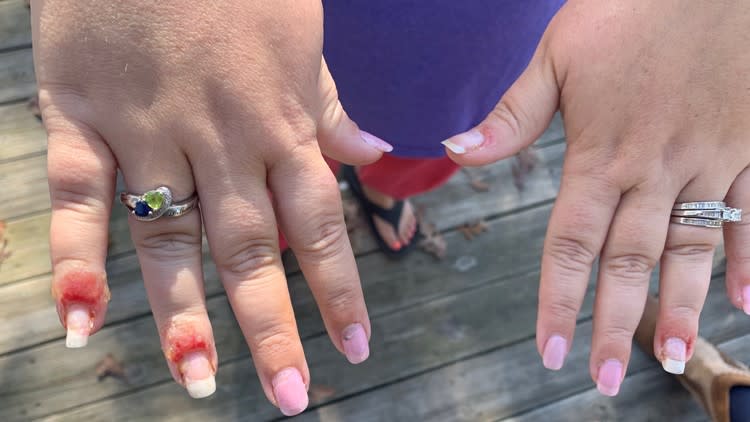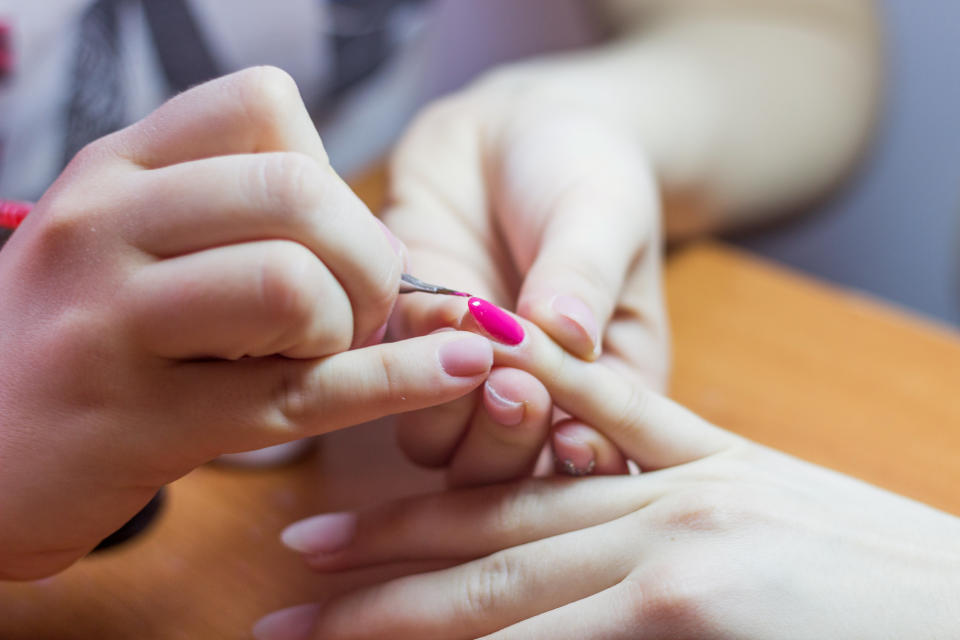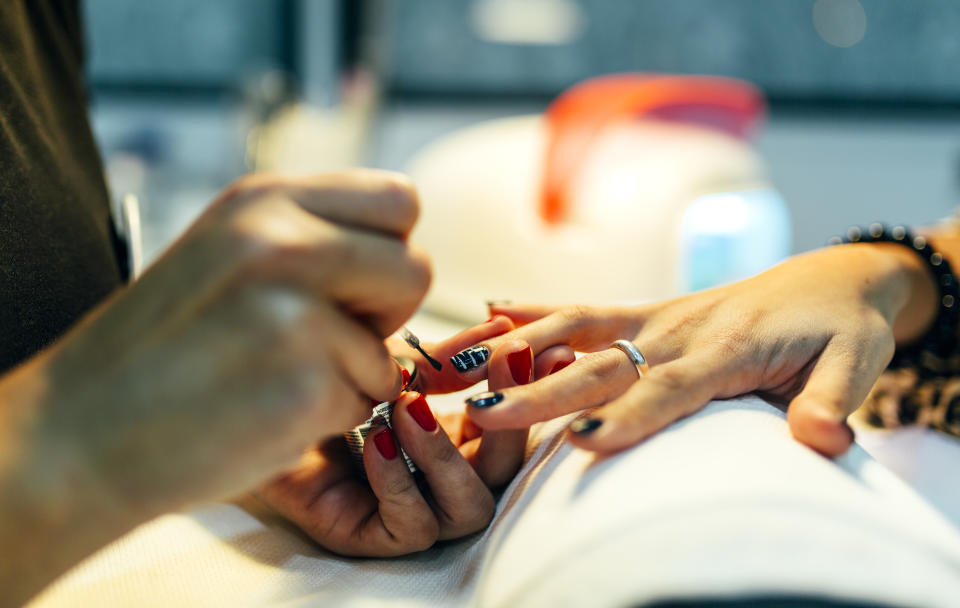What The Health?! Woman develops nail fungus after trendy 'dip powder' manicure

Can leftover spaghetti really kill you? Can you actually cough up a blood clot in the shape of your lung? In Yahoo Lifestyle Canada‘s newest series, What The Health?!, we ask doctors to weigh in on odd health news stories and set the record straight. Be sure to check back every Friday for the latest.
From nails to nightmare: a North Carolina woman who had a popular manicure at a local salon has acquired a nasty fungal infection.
According to WFMY News 2, Bethany (who asked that her last name not be used), had gone for a “dip powder” manicure. Not long after, her fingers were bleeding, swollen, and oozing pus.
“I noticed about a week later I had a little spots go up [around a few nails] and tried creams over-the-counter and then soaked them in alcohol and peroxide and it just kept getting worse,” Bethany said.
Upon seeing a doctor, she discovered that she was dealing with a fungal infection.

Dip powder manicures, sometimes called powder manicures, are a growing beauty trend. A manicurist cleans your nails with an electric buffer, paints them with a clear adhesive, then dips each nail into a jar of finely grated pigmented powder. Sometimes, the nails are dipped two or three times before being finished with a clear, quick-dry coat. The appeal of the procedure is that the colour is said to be long-lasting.
Technicians should be using an individual, clean jar of powder for each client. Any leftover powder must be disposed. If several people dip their nails in the same jar, germs can proliferate and spread.
“Our rules are very clear indicating once a product has come into contact with the client, it has to be thrown away,” Lynda Elliott, executive director of the NC Board of Cosmetic Art Examiner, told the news station.
Bethany said that the nail tech cut one of her nails while filing them, then dipped them in the powder.

Dr. Harvey Lui, professor of dermatology and skin science at the University of British Columbia, says that any kind of nail procedure has the potential for multiple sources of infection.
“Any time you get a break in the skin or introduce trauma to nail plate or trauma around the nail, it allows any virus, bacteria, or fungus to enter and cause problems,” Lui tells Yahoo Canada.
“When nails are treated—when you file or buff them—it’s like painting a wall: you sand the wall first so the paint can absorb better. Every time you abrade the surface of the nail, you’re introducing microscopic tears and breaks in the nail plate,” he says. “Then when you’re putting gels or powders or different applications on the nail, it might be the source of infection.”
Having cuticles pushed back is another no-no, Lui says. Although some people like to push them back to make their nails appear longer, this increases the risk of infection. He compares cuticles to caulking to seal the edge of kitchen countertops so that water doesn’t leak in.
“The cuticle is natural caulking to prevent water, bacteria, and foreign materials from entering under nail plate, causing infection or injury,” Lui says.

While bacterial infections are the most common, viruses, including herpes of the finger, can also be spread if nail salon instruments aren’t clean or the same tools are used among multiple customers. “That can be very painful and swollen with lots of discomfort,” Lui explains.
People who soak their hands in water or do a lot of wet work are more prone to bacterial infections. Pseudomonas is a type of bacteria that turns nails green—a sign to see a doctor.
With dip manicures, people should ensure that the powder is not being used out of the original container or used from one client to the next.
“If just one person has a nail infection, they’ve inoculated that tub and everyone after is at risk of picking up the infection,” Lui says. “You have to trust the person you’re dealing with and look at the general cleanliness of the place. I wouldn’t go and eat at an establishment that uses communal dish-ware.
“So long as establishment is adhering to cleanliness, they should treat their customers as they’d like to be treated themselves,” he says.
Let us know what you think by commenting below and tweeting @YahooStyleCA! Follow us on Twitter and Instagram.



